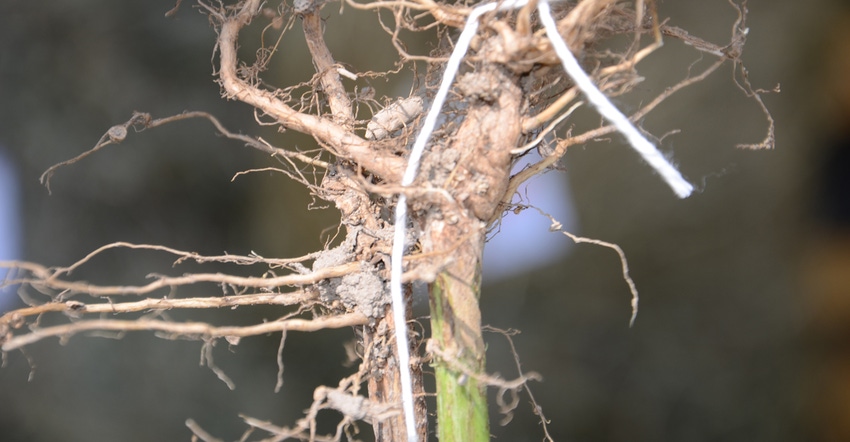
Soybean cyst nematode remains the 800-pound gorilla when it comes to nematode problems that affect large-scale crops in Indiana, particularly corn and soybeans. However, Jamal Faghihi says the world of nematodes is constantly changing, and people like himself who study them continue to make new observations.
Faghihi, a longtime Purdue University research and Extension specialist in nematology, recently put together five observations that would make a "what’s new" list based on his most recent studies. Here are the latest observations and trends related to nematodes.
1. Needle nematodes can occur on wheat in cool, wet soils. Traditionally, these nematodes that can affect corn have been found in sandier soils in the state. However, Faghihi says they’ve recently been found on mint in the fall on dark, wet, soils, as well. These are generally considered some of the most productive soils in the state.
2. Goosegrass cyst nematode was found in Indiana. Goosegrass cyst nematode was found in corn in Spencer County in 2016. It was the first confirmed discovery of this pest in the state, Faghihi says.
This cyst nematode is totally different from the cyst nematode that affects soybeans. Goosegrass cyst nematode was first identified in Kentucky and Tennessee in 2006. It’s believed that continuous corn would add pressure and more opportunity for this nematode to appear.
3. Root knot nematodes were observed in soybeans. Symptoms are stunted, yellow soybeans, which can also be symptoms of soybean cyst nematode damage. In the case of root knot nematode, the roots encapsulate the females, forming what looks like a knot, Faghihi says. The knots have a distinctive shape, which makes this condition relatively easy to identify if you dig up roots in the field.
4. Recent observations were made of nematodes on mint. In northern Indiana, mint is an important crop for many people. Mint can be plagued by nematodes. Faghihi says they have found needle nematodes on mint. These won’t affect soybeans, but can move into the soil.
There is also a root knot nematode that affects mint. It is different than the root knot nematode that can impact soybeans.
5. Handle plants gently when looking for nematodes on roots. Whether you’re looking for traditional nematodes such as soybean cyst nematodes, or you suspect another type of nematode may be affecting crop roots, you need to follow careful scouting procedures if you want to achieve the most accurate observations, Faghihi says.
The key is that if you pull plants up forcefully, a good portion of the cyst nematodes may fall off and be left behind in the soil, he says. Instead, when your goal is checking for nematodes, he recommends using a shovel and gently digging around the plant so you can remove the plant with the roots.
Once removed, place the roots in a bucket of water and wash them, Faghihi suggests. If cyst nematodes were present and you handled the plants and roots carefully, they should be visible after washing the roots.
About the Author(s)
You May Also Like




